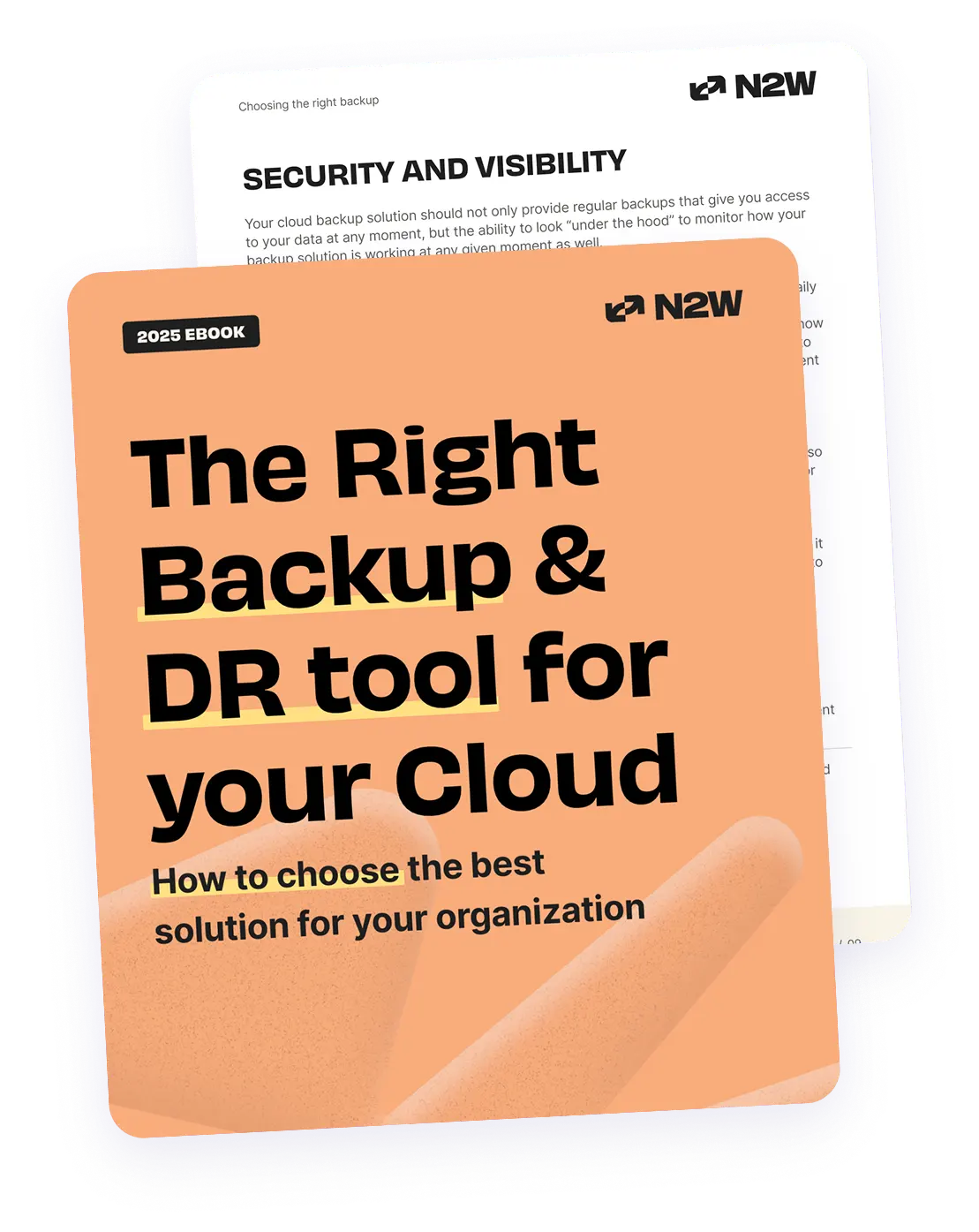From as early as the first tape backups and magnetic tapes of the 1960s, to the disk2disk backups that emerged in the 2000s, backup for the enterprise has evolved considerably. The importance of backup for enterprises, however, has not changed. All enterprises need efficient and reliable backup, as well as a viable disaster recovery plan. And as businesses become increasingly reliant on the cloud, the need to have a reliable, secure backup and disaster recovery is more important than ever.
As businesses begin to understand this critical need, they must assess several factors for their backup and recovery strategy – including cost, scalability, the impact of data loss and more. In this article, we’ll discuss the evolution of backup and recovery, the challenges these rapid changes present for enterprises, and the pros and cons of backup and recovery in the cloud today.
The Evolution of Backup and Recovery – A Timeline of Rapid Change
At one time, magnetic tapes were the only way to protect data. And although it might seem that such an old approach would go the way of the dinosaur, more than 70% of businesses claim that they still use tape as part of their overall backup strategy. But why? Companies have invested heavily in tape backup software and hardware due to their cost efficiencies, and for ensuring long-term data retention. And although the introduction and recent growth of cloud backup and recovery brings with it great possibilities for backup efficiency and reliability, it also brings concerns from enterprises about just how secure their backup and recovery processes really are.
Recovering data from tape backups, however, can be a slow process – especially when the backups need to be retrieved from an offsite location. Today’s backup options are more flexible and varied, with cloud-based solutions enabling backup to a central repository in the event any corporate data is lost, damaged or stolen. Cloud-based disaster recovery, for its part, offers additional advantages, including the ability to utilize a pay-as-you-go model, almost unlimited storage capacity, and flexibility.
The Age of Virtualization
Before the emergence of cloud-based backup and DR, virtualization enabled systems to be recovered by duplicating images of virtual machines and recreating them elsewhere. The usage of virtualization expanded significantly, due to its ability to lower infrastructure costs and provide increased business efficiency and agility. But the challenge with virtualization often occurs when the backup repository is local and not in the cloud.
The Emergence of the Cloud
As media types and volumes continue to expand within enterprises, companies are increasingly looking for new and innovative ways to protect and secure all of their data. The faster recovery times associated with a cloud-based approach provides a dependable way for businesses to ensure business continuity.
A new report from technology research firm Technavio, in fact, indicates that the global cloud backup and disaster recovery market will expand at a Compound Annual Growth Rate (CAGR) of almost 20% by 2020. With these rapid changes, companies today are increasingly looking for third-party backup solutions to help cope. With the trends of constantly growing data, changing infrastructure requirements and an increased emphasis on data protection, companies are simply outgrowing their own in-house backup solutions.
Challenges for the Enterprise – Running to Keep Up
The wave of cloud backup and recovery options is not without its problems and challenges. These include cost, scalability, reliability, redundancy and data loss. Enterprises today expect around-the-clock availability of applications, with no data loss; cloud backup and cloud-based disaster recovery is no longer viewed as a secondary operation. Delivering a viable backup and recovery solution can almost seem impossible with these demands, and can feel even more unrealistic when using traditional backup and recovery strategies.
Final Note
So what’s next? Enterprises today must fully assess their current situation by mapping existing backups in the enterprise; considering redundancy levels and archiving necessities; assessing requirements for multiple sites; and evaluating the optimal architecture for their backup and DR strategy. And no evaluation process can be complete without selecting a backup and DR service provider that provides the right fit for a company’s needs.
N2WS provides enterprises with flexible backup policies and scheduling, rapid recovery of instances, and a simple, intuitive and user-friendly web interface to easily manage backup operations. N2WS has a Windows agent to consistently back up Windows applications, and allows users to manage multiple AWS accounts and configure policies and schedules to take automated snapshot backups.
